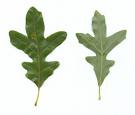Quercus Lyrata Tree Information
Images of Quercus Lyrata:






Quercus Lyrata grows in the following 18 states and provinces:
Alabama, Arkansas, Delaware, Florida, Georgia, Illinois, Indiana, Kentucky, Louisiana, Mississippi, Missouri, North Carolina, Oklahoma, South Carolina, Tennessee, Texas, Virginia, West VirginiaInformation about Quercus Lyrata:
The Quercus Lyrata is commonly known as the Overcup Oak, Swamp Post Oak, Swamp White Oak as well as Water White Oak.
The currently accepted scientific name of overcup oak is Quercus lyrata Walt. . Two accepted forms are differentiated : Q. l. forma lyrata, with hairy undersurfaces, Q. l. forma viridis Trel., with scattered hairs on leaf undersurfaces. Overcup oak hybridizes with many other oaks in the white oak subgenus (Quercus) including white oak (Q. alba), swamp white oak (Q. bicolor), Durand oak (Q. durandii), bur oak (Q. macrocarpa), swamp chestnut oak (Q. michauxii), post oak (Q. stellata), and live oak (Q. virginiana) . Overcup oak is genetically most similar to post oak, based on electrophoretic evidence .Overcup oak occurs on the Coastal Plain from southern Virginia south to Georgia and northwestern Florida; west to eastern Texas; north in the Mississippi Valley to extreme southeastern Oklahoma, southern Illinois, southwestern Indiana, and western Kentucky. Disjunct populations occur in Delaware, Maryland, central Tennessee, and northern Alabama .Overcup oak is dominant in only one described cover type, overcup oak/water hickory (Carya aquatica) . This cover type extended over 1,241,250 acres (496,500 ha) of the lower Mississippi Valley in 1990. It was the most floristically diverse of the wet-site cover types, with five species making up 60 percent of the basal area . Tree associates not mentioned previously include laurel oak (Q. laurifolia), American elm (Ulmus americana), cedar elm (U. crassifolia), water locust (Gleditsia aquatica), common persimmon (Diospyros virginiana), hawthorn (Crataegus spp.), planer-tree (Planera aquatica), and red maple (Acer rubrum). Shrub associates include swamp-privet (Forestiera acuminata), roughleaf dogwood (Cornus drummondii), swamp dogwood (C. stricta), and common buttonbush (Cephalanthus occidentalis) .Some of the information provided here is attributed to:Sullivan, Janet. Quercus lyrata. 1993. In: Fire Effects Information System, [Online]. U.S. Department of Agriculture, Forest Service, Rocky Mountain Research Station, Fire Sciences Laboratory (Producer). , available at the USDA Fire Effects Information System (FEIS) website